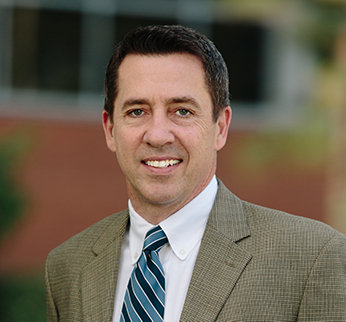

About six years ago, New Testament professors Moyer Hubbard and Alan Hultberg received an email from the Lockman Foundation that went something like this: “Hey, we are updating the NASB. Want in?”
At this point, the Southern California-based Bible translation foundation had already completed its first round of revisions for the widely used New American Standard Bible, which had not been updated since 1995. They were looking for second readers to critique, make suggestions and add notes, so that they could go back through, make revisions, and five years later release the new NASB 2020. Hubbard and Hultberg, who teach at Biola’s Talbot School of Theology, were two of these second readers.
Hubbard specializes in the Pauline epistles and the Greco-Roman context of the New Testament. He contributed to the notes and translation of Paul’s letters and the book of Acts. Hultberg specializes in apocalyptic literature. He contributed to 1 and 2 Peter, John’s three epistles, Jude, James, Galatians and Revelation.
According to Hubbard and Hultberg, there are two main reasons why Bible translation updates are necessary.
First, language changes. The English language has come a long way since William Tyndale first translated John 3:16 in 1526: “For God so loveth the worlde yt he hath geven his only sonne that none that beleve in him shuld perisshe: but shuld have everlastinge lyfe.” According to Hubbard, “It’s pretty important about every 10 years that we revisit a translation to make sure it communicates accurately the message of the original in contemporary idiom.”
An example of this is the NASB 2020’s updates in gendered language. It is no longer common for words like “men” to be used in reference to both men and women, yet, in many contexts, that’s what the Greek word ánthrōpos actually means. In contexts where the intended meaning of ánthrōpos is clearly to include both men and women, the NASB 2020 now translates it as “person” or “people” rather than “man” or “men.” Where it clearly means males, however, it is still translated as “men.” As Hubbard puts it, “We’re not talking about making God a female or something like that. We’re just talking about accurately translating it for a contemporary audience.”
Second, scholarship changes. As Hultberg puts it, “There are certain words that are difficult to understand in the original language. As new evidence comes in or better arguments are made about one possible translation over another, that changes the consensus on what’s the best way of conveying that thing in [English.]”
This can be seen in a footnote that Hultberg suggested for Revelation 1:19, which is translated identically in both the NASB 1995 and NASB 2020: “Therefore write the things which you have seen, and the things which are, and the things which will take place after these things.” According to Hultberg, this verse can be translated in two ways. It could be that Jesus is telling John to write only about what has yet to happen even today, or it could be that plus some things that already happened in the first century.
“It’s an interpretative crux about what Revelation is going to be about,” Hultberg says. In the NASB 2020, although the translation is the same, it now includes a footnote explaining this other possible translation. It’s a small change with big implications.
Talbot School of Theology has a long history of involvement in English Bible translations. Earlier versions of the NASB benefited from the scholarship of former professors Charles Lee Feinberg, Robert Saucy and Thomas Finley. Meanwhile, Dean Clinton E. Arnold currently serves on the translation oversight committee for the English Standard Version (ESV), and wrote the notes on Colossians and Philemon for the ESV Study Bible. And professor Darian Lockett served as a translation oversight committee member for the Christian Standard Bible.
Hubbard and Hultberg are carrying on the legacy of Talbot’s commitment to the nearly 500-year-old tradition of translating the Bible from its original languages into English.
 Biola University
Biola University.jpg)

